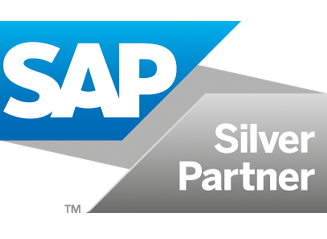Published: September 2025
Germany is preparing to roll out its Germany B2B e-invoicing mandate in phases, starting with inbound e-invoice acceptance before extending to outbound issuance obligations. This staged approach is designed to help businesses gradually adapt to structured invoicing while aligning with national tax modernisation goals and the European Union’s broader digitalisation agenda.
Background and Purpose
The decision to introduce a mandatory B2B e-invoicing regime stems from multiple objectives. At the national level, Germany aims to tackle VAT fraud and reduce the VAT gap, which continues to be a concern across the EU. Structured e-invoicing offers a reliable way to ensure invoice authenticity and data accuracy, making it harder for fraudulent claims to pass undetected.
From a strategic perspective, Germany’s move aligns with the EU’s VAT in the Digital Age (ViDA) initiative, which aims to create a more harmonised, real-time, and interoperable VAT reporting system across member states. Although Germany’s current framework stops short of real-time digital reporting, the adoption of structured e-invoicing can be seen as a preparatory step towards the possible introduction of such measures in the future.
Germany already has experience in the e-invoicing domain through its B2G (business-to-government) mandate, where XRechnung has been the standard format since 2020. Lessons learned from this implementation—particularly in terms of interoperability, supplier onboarding, and system integration—are now informing the wider B2B rollout. However, the scale of B2B invoicing is far larger and more diverse, requiring a more flexible and phased approach.
Implementation Timeline
Phase 1: Inbound E-Invoicing (Mandatory Receipt) – From 1 January 2025
From 1 January 2025, all VAT-registered businesses established in Germany must be technically able to receive structured e-invoices for domestic B2B transactions. This means that even if a business is not yet required to issue e-invoices, it must be capable of accepting and processing formats such as XRechnung or ZUGFeRD 2.0+. This obligation applies to all taxable persons resident in Germany, regardless of size, turnover, or sector.
Phase 2: Outbound E-Invoicing (Mandatory Issuance) – 2026 to 2028
- From 1 January 2027: Large businesses will be required to issue structured e-invoices for domestic B2B transactions.
- From 1 January 2028: All VAT-registered businesses in Germany will have to issue e-invoices for qualifying transactions.
The mandate applies only to domestic B2B transactions. Certain transactions remain outside the scope, including intra-community supplies, exports, B2C sales, low-value invoices (below €250), and certain transport-related documents such as passenger tickets.
It is possible that certain industries—particularly those with complex supply chains or high invoice volumes—may engage in early adoption or pilot programmes to ensure readiness. For small businesses and self-employed professionals, the most immediate priority will be ensuring they can accept structured e-invoices by 2025.
Legal Basis and Legislative Context
The e-invoicing mandate is embedded in the Wachstumschancengesetz (Growth Opportunities Act), a legislative package aimed at stimulating economic growth through tax incentives, digitalisation, and administrative simplification. The law includes provisions that define the scope of the mandate, technical requirements, implementation phases, and exceptions.
At the EU level, Directive 2014/55/EU provides the framework for cross-border interoperability in public procurement and establishes technical compliance requirements for e-invoices. While initially focused on B2G transactions, the directive has influenced B2B mandates by setting standards for structured invoice data, semantic interoperability, and secure transmission.
Germany has formally confirmed that the XRechnung and ZUGFeRD 2.0+ formats meet the requirements of this directive, ensuring they are interoperable within the wider EU ecosystem.
Technical Standards in Depth
XRechnung vs. ZUGFeRD
- XRechnung: A purely XML-based format, containing only structured data. It is the standard for B2G e-invoicing in Germany and follows a strict set of validation rules. While it offers high interoperability, it is not intended for human readability without specialised software.
- ZUGFeRD 2.0+: A hybrid format combining a machine-readable XML file with a human-readable PDF. This allows businesses to cater to both automated processing needs and traditional visual invoice checking.
Hybrid Invoice Formats (PDF + XML)
In a hybrid format, the PDF version of the invoice is embedded with structured XML data. The PDF layer allows human users to review the invoice in a familiar visual format, while the XML layer enables automated processing by ERP systems. This dual approach helps businesses transition from traditional invoicing to full automation without sacrificing usability.
ERP and Accounting System Integration
For compliance, businesses must ensure that their ERP and accounting systems can:
- Generate invoices in approved structured formats.
- Receive and process inbound structured invoices.
- Map internal data fields to the required standard fields (data mapping).
- Validate files against the official schema before sending (schema validation).
- Store invoices securely for the legally required retention period.
Integration projects will require careful planning, especially for businesses currently reliant on PDF-only invoicing workflows.
Technical Requirements and Accepted Formats
Under the mandate, only structured formats will be legally compliant. Standalone PDF invoices will no longer suffice unless they are part of an approved hybrid format that contains embedded XML data. The German government officially recognises XRechnung and ZUGFeRD (version 2.0 or higher) as compliant formats. Both formats meet EU Directive 2014/55/EU requirements and are compatible with European interoperability standards.
These formats improve data quality, reduce manual processing errors, enhance audit trails, and facilitate seamless integration with business systems. For many companies, moving to structured e-invoicing will also pave the way for improved automation in procurement, payment, and accounting processes.
Outlook on Digital Reporting and Future Developments
At present, the e-invoicing mandate in Germany does not include a digital reporting requirement to tax authorities. This differentiates Germany’s model from those in countries such as Italy and Poland, where e-invoicing is integrated with real-time clearance or reporting systems.
However, the ViDA initiative is expected to bring a broader, standardised digital reporting framework across the EU. While details are still under discussion, businesses should expect that future requirements may involve near-real-time transaction reporting to tax authorities.
By adopting scalable, interoperable e-invoicing solutions now, German businesses can ensure they are not only compliant with the 2025–2028 mandate but also prepared for potential future developments in VAT digitalisation.
Key Business Benefits
Beyond compliance, the shift to structured e-invoicing offers several advantages:
- Automation and efficiency: Reduced manual data entry and faster processing times.
- Fraud prevention: Increased traceability and validation of invoice data.
- Cost reduction: Lower printing, postage, and archiving costs.
- Improved auditability: Enhanced transparency and easier regulatory inspections.
- Cross-border readiness: Compliance with EU-wide standards facilitates cross-border transactions.
Summary Table
| Aspect | Details |
| Implementation Timeline | From January 1, 2025, receiving (inbound) structured e-invoices will be mandatory. Sending (outbound) e-invoices becomes mandatory in phases, with full compliance by January 1, 2028. |
| Scope | Domestic B2B transactions between German VAT-registered entities |
| Excluded Transactions | Intra-community supplies, cross-border transactions, B2C, invoices under €250, transport tickets |
| Accepted Formats | XRechnung, ZUGFeRD 2.0 or higher (structured formats only; PDFs alone are non-compliant) |
| Legal Basis | Growth Opportunities Act (Wachstumschancengesetz), in alignment with EU Directive 2014/55/EU |
| Digital Reporting Requirement | Not yet applicable, but future alignment with ViDA (VAT in the Digital Age) is anticipated |
| Key Benefits | Automation, fraud prevention, cost reduction, improved VAT compliance and auditability |
| Recommended Business Actions | Enable receipt of structured e-invoices by 2025; upgrade ERP/accounting systems for full compliance by 2028; monitor digital reporting developments |





